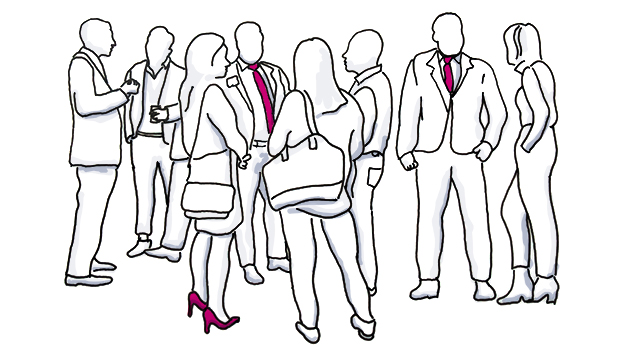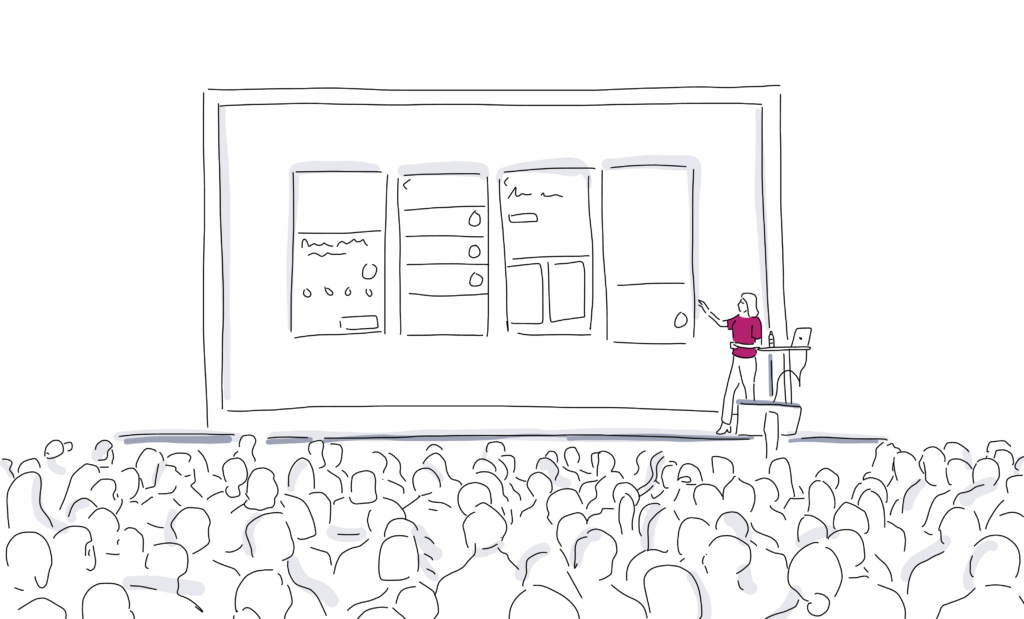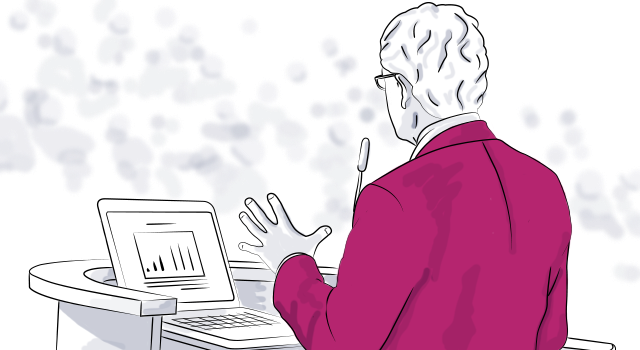
Event Name Badge Essentials: 11 Tips to Avoid Conference Headaches
Name badge nightmares? Welcome to the field of event planning!
The badge ” seemingly an insignificant event detail ” is often an afterthought during the race to the finish line. Every minute is precious in the days before a business professional event, so you might wonder if this tedious part of event prep is necessary.
Do I really need conference badges for my attendees? (Hint: Yes for 5 reasons.)

I have contemplated this option many times. But having considered pros and cons, I believe the benefits of event name badges for the guests outweigh any sacrifices on the event prep team’s side. Here’s why:
1. People form connections when they hear their name.
I’ve observed over and over again that people find comfort in hearing their own name. They “warm up” faster to other people who use their name. Especially at business events, this makes a good first impression and can get a conversation (and potential business relationship) off to a good start.
Related: How to Create Introvert-Friendly Events
2. Most of us are terrible with names.
The name badge serves as a reminder of the person’s name ” a basic personal detail that truly matters! When it’s there, it helps acquaintances avoid potential missteps. Having essential identifying information ˜at hand’ at the right time can open the door for opportunities, and provide a platform for your guests to shine and impress.
3. A conference badge is a conversation starter.
An event name tag is also a convenient conversation starter. I will admit, they might not be the most creative openers, but the first step into unknown waters can lead to meaningful developments and networking.
4. An event badge can communicate more than just a name.
Many people attend business events to network ” and attendees want to know who they should connect with. If that’s the case, you can include other info on the name badge to help attendees recognize others. For instance, color-coded name badges can identify industry affiliates, sponsors, speakers, and such.
5. Event badges are a social media opportunity.
And last but not least, social media has also been gaining momentum in business circles. Adding Twitter handles and LinkedIn information to badges can be a good idea. With mobile devices at the ready, this info makes connecting a quick and easy reality!
Related: 30 Social Media Tips That Actually Drive Engagement at Events
Follow These 11 Tips to Avoid Event Name Badge Snafus

Now, let me share a few tips to avoid name badge nightmares, and to really nail conference badges for your next big event.
1. Get it from the horse’s mouth
Determine what information will go on the name badges early. Then request that information in the RSVP or ticket sales process. This way, you don’t have to double check the attendee’s details.
2. Use high-quality name badges
The type of badge you choose says a lot about the quality of your event. There are many options: clips, lanyard, magnets, stickers¦ Choose something that matches the formality of your event. Make sure it will not damage fabrics. Nobody wants to leave an event with holes, wrinkles, and adhesive stains on their outfit!
3. Brand your badges
Don’t be shy to include the event or company logo on the event name badge. Boosting your brand recognition is priceless!
4. Make it clean and legible
In most cases, it’s sufficient to include first name, last name, and organization. If you’re in the U.S., there’s no need for titles such as Ph.D, MA, or the guest’s position (the social standards vary in Europe, so beware!). Choose a simple text, dark color, and large font (I prefer 24-point font or larger).
5. Support networking
Use color codes, graphics, or other markers to distinguish between attendants of different professional backgrounds, interests, etc. This helps people find each other and serves as a conversation starter.
Related: How to Create Better Networking Moments at Events
6. Include social media info
Twitter handles and LinkedIn profile info should be included on today’s business name badges. They make following up as easy as 1-2-3. I prefer to add this info at the bottom left of the badge.
7. Avoid long registration lines
If your event has more than 50 attendees, create multiple lines (organized alphabetically) for picking up name badges. Make sure you have enough signage and staff to direct and support all guests.
Related: The Best Apps for Speedy Event Registration
8. Find just the right placement
For visibility, encourage your guests to wear the badge above the right breastbone. This is in line with your handshake, so this placement will minimize awkward glances.
9. Ban the makeshift badge
Just as there are always no-shows, there are also always guests who didn’t make it through the formal registration process (or registered at the last minute). Have a system for producing additional event name tags in place. Today’s small printers are divine!
10. Recycle your materials
Collect badges at the end of the event for “recycling,” and reuse them at your next event! It’s good for the wallet and the environment.
Related: 7 Ways To Make Your Events More Eco-Friendly
11. Let guests find their own name badge
Rather than having staff sort through a stack of badges, let guests find their own. Set up the badge pickup station near registration or check-in, but not so close that it slows down your process. As for how to organize name badges? Alphabetical by last name is easiest.
Have more questions about conference name badges?
In the USA, name tags traditionally go above the pocket on the right side of your shirt.
Badge name refers to a name on a badge that is different than the wearer’s legal name. For example, Chris would be a common badge name for people named Christopher.
A large, simple, easy-to-read font is best. The first name should be quite large so as to be readable from a distance.
A standard lanyard is 36 inches long, and either 3/8″ or 5/8″ wide.
